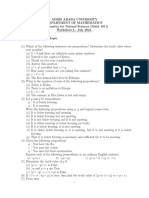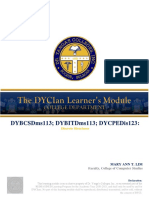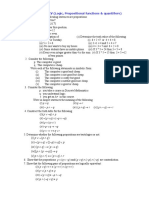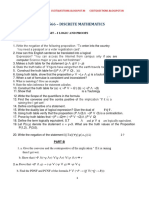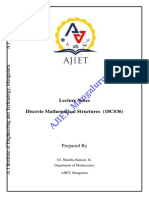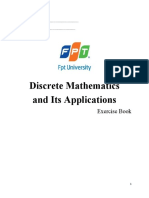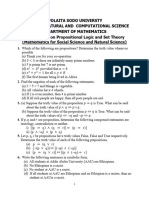0% found this document useful (0 votes)
49 views2 pagesDMS Tutorial Sheet 2
The document provides a tutorial sheet for a course on Discrete Mathematical Structures. It includes 8 questions covering topics like propositional logic, conditional statements, truth tables, and more. The document aims to help students apply propositional logic to areas like computer circuits, programming, and expert systems.
Uploaded by
sanskarsinghsengarCopyright
© © All Rights Reserved
We take content rights seriously. If you suspect this is your content, claim it here.
Available Formats
Download as PDF, TXT or read online on Scribd
0% found this document useful (0 votes)
49 views2 pagesDMS Tutorial Sheet 2
The document provides a tutorial sheet for a course on Discrete Mathematical Structures. It includes 8 questions covering topics like propositional logic, conditional statements, truth tables, and more. The document aims to help students apply propositional logic to areas like computer circuits, programming, and expert systems.
Uploaded by
sanskarsinghsengarCopyright
© © All Rights Reserved
We take content rights seriously. If you suspect this is your content, claim it here.
Available Formats
Download as PDF, TXT or read online on Scribd
/ 2




















